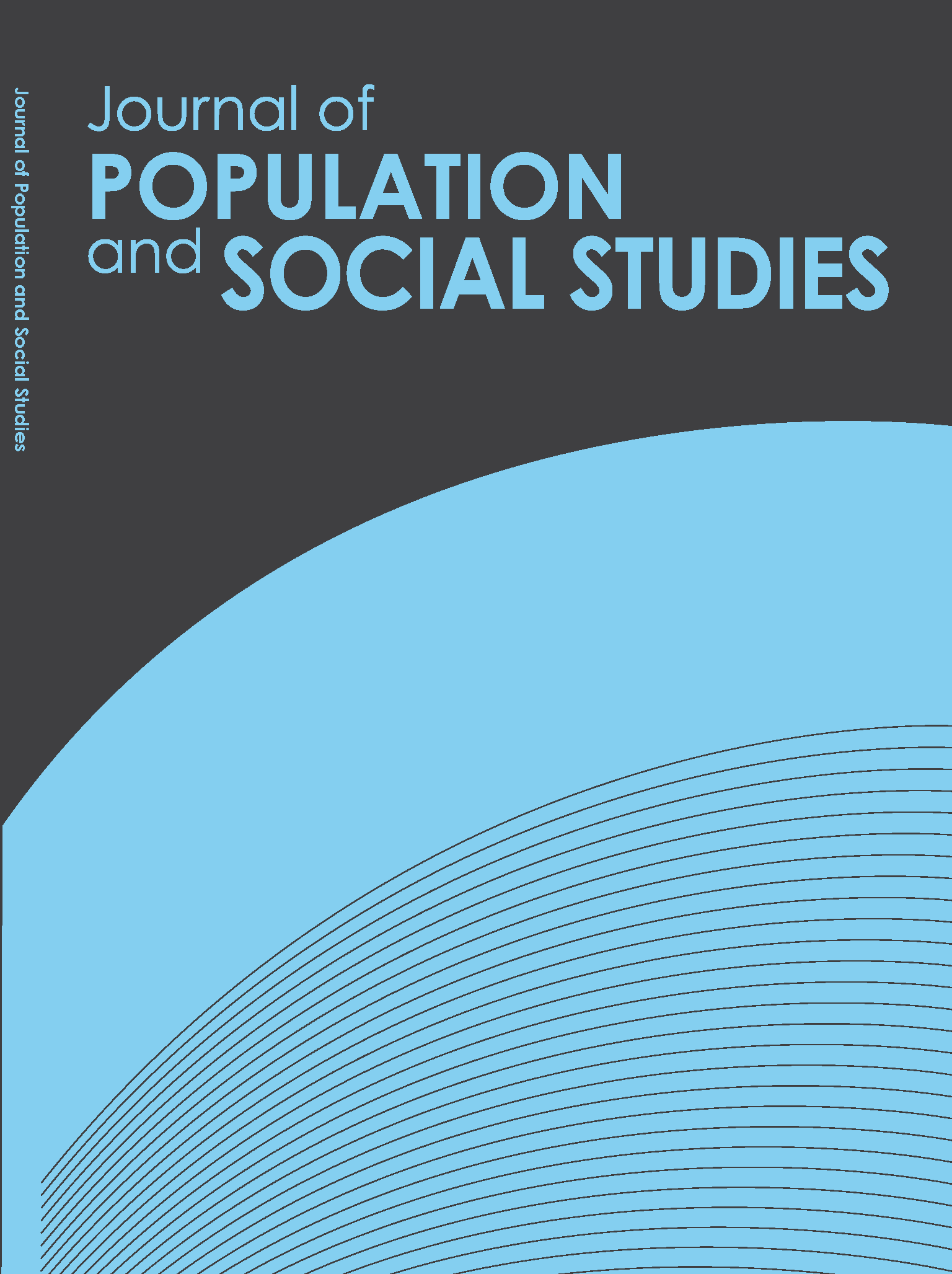Reading Problems and Risk of Dyslexia Among Early Elementary Students in Thailand
Main Article Content
Abstract
Reading problems and dyslexia adversely affect a child’s learning, emotions, and behavior. This research aims to survey students with reading problems and at risk of dyslexia and find the relevant factors. This study considered students in the first grade of primary school. Eight schools in Pathum Thani province were selected by the purposive sampling method. Caregivers responded to questionnaires regarding information about their children and their family backgrounds. Research assistants tested the children's reading abilities with a reading ability assessment test. It was found that 161 of the 1,018 students are at-risk for dyslexia, with a calculated prevalence of 15.81% (95% CI, 13.63–18.20%). Following an analysis using the multivariable logistic regression model, it was found that the pertinent risk factors for reading problems in children were being male, a developmental or hereditary disease, a father with a low level of education, and type of school. Children with reading problems should receive the help they need early, while risk factors should be identified to improve the quality of education in different types of schools.
Article Details

This work is licensed under a Creative Commons Attribution-NonCommercial-NoDerivatives 4.0 International License.
References
• Altarac, M., & Saroha, E. (2007). Lifetime prevalence of learning disability among US children. Pediatrics, 119(Suppl. 1), S77–S83. https://doi.org/10.1542/peds.2006-2089L
• American Psychiatric Association. (2013). Diagnostic and statistical manual of mental disorders (5th ed.). American Psychiatric Association. https://doi.org/10.1176/appi.books.9780890425596
• Arnold, E. M., Goldston, D. B., Walsh, A. K., Reboussin, B. A., Daniel, S. S., Hickman, E., & Wood, F. B. (2005). Severity of emotional and behavioral problems among poor and typical readers. Journal of Abnormal Child Psychology, 33(2), 205–217. https://doi.org/10.1007/s10802-005-1828-9
• Boland, R., Verduin, M. L., & Ruiz, P. (Eds.). (2022). Kaplan & Sadock’s synopsis of psychiatry (12th ed.). Wolters Kluwer.
• Boon-yasidhi, V. (2021). จิตเวชศาสตร์เด็กและวัยรุ่นในเวชปฏิบัติ [Child and adolescent psychiatry in clinical practice]. Department of Pediatrics, Faculty of Medicine, Siriraj Hospital Mahidol University.
• Martin, A., & Volkmar, F. R. (2007). Lewis’s child and adolescent psychiatry: A comprehensive textbook (4th ed.). Lippincott Williams & Wilkins.
• National Reading Panel. (2000, April). Teaching children to read: An evidence-based assessment of the scientific research literature on reading and its implications for reading instruction. https://www.nichd.nih.gov/sites/default/files/publications/pubs/nrp/Documents/report.pdf
• Pathumthani Provincial Educational Office. (2019). ข้อมูลสารสนเทศ ปีการศึกษา 2561 ของสำนักงานศึกษาธิการจังหวัดปทุมธานี [Information for the academic year 2018 of the Office of Education, Pathum Thani Province]. http://pathumpeo.com/news-detail_2038_28426.
• Piyasil, V., & Wangtan, S. (2016). Learning Disorders and Comorbidity. Journal of the Psychiatric Association of Thailand, 60(4), 287–296. https://he01.tci-thaijo.org/index.php/JPAT/article/view/45616
• Raven, J., Raven, J. C., & Court, J. H. (2003). Manual for Raven’s Progressive Matrices and Vocabulary Scales. Section 1: General Overview. Harcourt Assessment.
• Roongpraiwan, R., Ruangdaraganon, N., Visudhiphan, P., & Santikul, K. (2002). Prevalence and clinical characteristics of dyslexia in primary school students. Journal of the Medical Association of Thailand, 85(11), 1097–1103. http://www.jmatonline.com/index.php/jmat/article/view/4891
• RTI International. (2016, March). Early Grade Reading Assessment (EGRA) Toolkit (2nd ed.). United States Agency for International Development. https://pdf.usaid.gov/pdf_docs/pa00m4tn.pdf
• Ruangdaraganon, N. (Ed.) (2008). ตำราพัฒนาการและพฤติกรรมเด็ก [Child development and behavior textbook]. Holistic Publishing.
• Sangsupawanich, P., Tantivess, S., Sanguan, K., Pattanaphesaj, J., Lekuthai, W., & Worachotekamjorn, J. (2011). การคัดกรองโรคสมาธิสั้นและความบกพร่องด้านการเรียนในโรงเรียน [School-based screening for attention deficit and hyperactivity disorder (ADHD) and learning disorders (LD)]. Thai Health Promotion Foundation. https://www.hitap.net/research/17541
• Shah, H. R., Sagar, J. K. V., Somaiya, M. P., & Nagpal, J. K. (2019). Clinical practice guidelines on assessment and management of specific learning disorders. Indian Journal of Psychiatry, 61(Suppl. 2), 211–225. https://doi.org/10.4103/psychiatry.IndianJPsychiatry_564_18
• Shaywitz, S. E., & Shaywitz, B. A. (2020). Dyslexia. In R. M. Kliegman & J. St Geme (Eds.), Nelson Textbook of Pediatrics (21st eds) (pp. 267–269). Elsevier.
• Silver, L. B. (1989). Psychological and family problems associated with learning disabilities: Assessment and intervention. Journal of the American Academy of Child & Adolescent Psychiatry, 28(3), 319–325. https://doi.org/10.1097/00004583-198905000-00003
• Thapar, A., Pine, D.S., Leckman, J. F., Scott, S., Snowling, M. J., & Taylor, E. A. (Eds.). (2015). Rutter’s child and adolescent psychiatry (6th ed.). Wiley-Blackwell.
• Vibulpatanavong, K. (2012). The development of phonological awareness and the relationship between phonological awareness and Thai language reading ability in lower primary school students in Thailand. The University of Sydney.
• Vibulpatanavong, K., & Evans, D. (2015, July 28–31). Off to a Good Start: Enhancing Reading Skills in Thai Children [Paper presentation]. The First International Conference on Special Education, Bangkok, Thailand.


